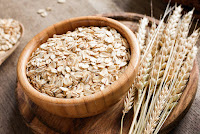It all began in March 2024, on what seemed like an ordinary workday. I was involved in a survey project that required home visits. It was there that I met someone — a woman full of warmth, strength, and something I couldn’t quite explain then. She had a deep and unwavering devotion to Hanuman Ji. I, on the other hand, wasn’t someone who deeply believed in any deity. I respected Shiv Ji and some others from a distance, but my real belief was in the power of the universe — nothing beyond, nothing specific.
This woman, however, saw potential in me. She encouraged me to apply for the ICCR scholarship—something I hadn’t seriously considered before. She stayed beside me through the application process, offering her support while I filled in each detail. Her quiet encouragement meant more than she probably realized.
As we continued the home visits, I started noticing something — in many of the homes, right at the entrance, there were photos or idols of Hanuman Ji. I saw it repeatedly, like a silent pattern — still, I didn’t think too deeply about it. I just moved ahead with the process.
Then, something strange happened...
One day, just a few minutes before submitting my application, my head accidentally hit a photo of Hanuman Ji in the home we were working from. I got a small injury. I paused. “Is this a bad sign?” I wondered. I wasn’t a devotee then, so I didn’t know how to read it. But that moment stayed with me.
A few weeks ago, I started watching the Shrimad Ramayan — out of simple interest. I’ve always enjoyed Bollywood shows, but watching Shrimad Ramayan felt different. It didn’t just entertain me; it stirred something deep within. I never expected what would follow.
As the show was playing one evening, I received a phone call.
"Congratulations, you’ve been selected for the University of Mysore," the official announced.
I had expected news from another university. But in that very moment, while immersed in Ramayan, Mysore appeared - just when I least anticipated it.
After receiving the offer, I took some time to reflect - and then made a decision to accept it. And the moment I did — a very peculiar thing happened. A large number of crows gathered outside my house, cawing loudly. It was intense and strange, as if nature itself was reacting.
In many South Asian spiritual traditions, especially in Hinduism, crows are believed to be messengers — sometimes associated with ancestors or spiritual transitions. Their sudden appearance, particularly in groups, is often seen as a sign or reminder that something significant is unfolding. At that moment, I didn’t know what to make of it. But somewhere in my heart, I felt that a deeper energy was at play.
But the strangeness didn’t stop there. As I stepped into the backyard, expecting a quiet moment, I was greeted by a light drizzle. It was odd—there had been no rain forecasted for the day. The air felt charged, as if some unseen force was guiding me on this path.
Eventually, I moved to Mysuru, the first place I ever lived in India. The city felt sacred but unfamiliar. The very first temple I visited was of Lord Shaniswaran — and that visit gave me a sense of calm I desperately needed. I had been struggling with loneliness and cultural shock, but after that visit, things slowly settled.
A month later, during Diwali, I traveled to Coimbatore to meet another close friend — not the woman from work, but someone who also guided me. She had told me earlier,
"Listen to the Hanuman Chalisa - it will always protect you and bring you peace." At the time, I had ignored it.
On the Deewali day, she took me to a Pancha Mukhi Hanuman Ji temple. I stayed near the temple for a few days, but honestly, I didn’t feel the divine or sacred presence I had expected. Instead, the atmosphere felt unfamiliar, and I couldn’t connect with it the way others might. It was peaceful, yet there was an odd sense of detachment. Despite that, I stayed, unsure of what I was meant to find, but feeling that something important was quietly unfolding.
The very next evening, without warning, I suddenly fell ill with a fever. It felt as if the universe had shifted in an instant. My journey in India, which had just begun with so much hope and anticipation, took a sharp and unexpected turn. What was meant to be a time of discovery and growth now felt uncertain, and I found myself caught in a whirlwind of emotions, trying to make sense of the sudden change.
I had to return to Sri Lanka.
What followed was a period of confusion, emotional pain, and a deep sense of loss. I had felt a soul connection with Mysore, and being forced to leave was painful. But that pain birthed something else within me.
Slowly, without forcing anything, I began listening to the Hanuman Chalisa — the very thing I had once ignored. As the days passed, I found myself not just listening, but believing. Not just believing, but devoting. My fear began to fade. My trauma began to heal. And my faith in Hanuman Ji began to blossom like a sacred flower in the desert.
Now, I say it proudly:
I am a devotee of Hanuman Ji.
My strength, my courage, my clarity — all come from the path that began with disbelief, took me through unexpected events, and led me straight into the heart of devotion.
This is a deeply personal reflection of my spiritual journey. I welcome readers of all backgrounds to read with an open heart. While I share my connection with Hanuman Ji, I honor all paths and all beliefs.




